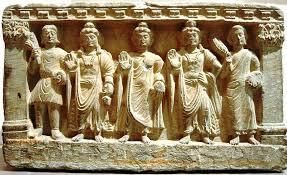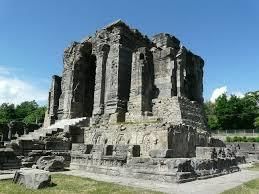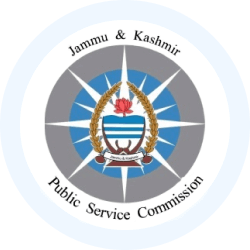Ancient History of Jammu and Kashmir | JKPSC KAS (Jammu and Kashmir): Preparation Course PDF Download
Introduction
The earliest history of Kashmir can be traced back to the epic Mahabharata period, which indicates that the region was governed by the Republican system of the Kambojas, with their capital being Rajapura, now known as Rajouri. Subsequently, this area came under the control of the Panchala tribe, a fact reflected in the name Pir Panjal, which is a variation of the Sanskrit tribal term ‘Panchala’.
Early History of Jammu and Kashmir
- Kalhana, recognized as the first historian of Kashmir, was a poet-historian from the 12th century AD who wrote the Rajatarangini between 1148-1150 AD. This work is considered the earliest reliable historical text about the region. The Nilamata Purana, written by Kashmiri Brahmins between the 6th and 7th centuries AD, is the earliest known text from Kashmir.
- It contains sacred legends about the origin of the Kashmir valley and details on rites and worships prescribed by Nila, the Lord of Kashmir Nagas. Despite its significance, it is not deemed as reliable as the Rajatarangini. However, Kalhana used the Nilamata Purana as a source for his historical writings on Kashmir.
- According to the ‘Nilmata Purana’, Kashmir was originally a lake that was drained by the sage Kashyapa, who then invited people to settle in the valley. The inhabitants named the valley Kashyap Mar and Kashyap Pura in his honor.
- The land has been known by various names to different cultures: the ancient Greeks referred to it as Kasperia, and the Chinese pilgrim Hiuen Tsang, who visited around 631 AD, called it Kashi-Mi-Lo. The local Kashmiris call their land Kasheer.

The early history of Jammu and Kashmir is categorized into three distinct ages:
The Pre-Historic Age
- Alexander Cunningham’s survey of the old structures mentioned in Kalhana’s chronicles, along with significant data, provides insights into the historic and pre-historic periods of Kashmir. Numismatic evidence, in the form of ancient gold, silver, copper, and brass coins, confirms a succession of kings as documented by Kalhana and other chronicles up to modern times.
- According to Dr. Sunil Chandra Ray, the valley has experienced Quaternary glacial cycles, with clear evidence found in the lacustrine deposits known as ‘Karewas’. These are divided into two groups: the lower Karewas of the Pleistocene Age and the upper Karewas of the second Inter-Glacial Age.
- Systematic excavation at this site began in 1960 by the Archaeological Department of India. Several pits have been discovered near the silt bed, indicating a settlement of early pit dwellers dating back to 3000 BC, which is considered the only settlement of its kind in India.
The Neolithic Age
- The Neolithic period marked a time of primitive technological and social development when humans invented agriculture, pottery for storing harvests, domesticated horses and cows, and established settled communities near water bodies. Numerous Neolithic period artifacts have been discovered in Jammu and Kashmir, particularly at Burzahom (Srinagar), the first archaeological site in the country, which features a Neolithic settlement dating back to around 2375 BC.
- At Burzahom, seeds of wheat, barley, and lentils have been found. During this period, copper tools were invented, and stone tools were enhanced by adding pointed edges for hunting, farming, and carving dwellings in clay grounds. Significant tools from this era include sewing needles, fishing harpoons, and hunting implements such as arrowheads, spearheads, and daggers. Stitched hides have also been uncovered at the site. Additionally, a Neolithic skull has been found at Burzahom.
- The skull has a hole in it, leading historians to suggest that surgical practices might have been performed during that time.
- Underground dwelling places have also been discovered at this site. These dwellings consist of a series of circular pits dug into the clay ground up to a depth of 3 meters.
- The pits are broad at the base and narrow at the opening, with holes around them where wooden poles were erected to support roofs made of tree branches.
- In these pits, grinding stones, clay ovens, and a pot filled with beads and semi-precious stones have been found. Historians believe that habitation at Burzahom ended around 1400 BC. Other archaeological sites in Kashmir include Begagund, Gofkral, Hariparigom, Olchibag, Pampur, Panzgom, Sombur, Waztal, and Brah.
Megalithic Culture/Age
- After the Neolithic Age, the megalithic culture emerged, characterized by the erection of massive stones or menhirs, which symbolized significant community events. These menhirs were large boulders or rocks that were brought down from the hills and placed at various sites near human settlements.
- Significant discoveries from this period in the state include mudbrick structures, pottery (particularly gritty red ware pottery) made on a potter's wheel, rubble structures, and tools and objects made of metal, bone, and stone. Burzahom shows traces of the last level of activity dating back to around the 3rd-4th century AD.
Ancient Historical Empires in Jammu and Kashmir
In the historic era, starting from 300 BC, the state saw the rise of numerous empires.
Mauryan Empire
- According to Kalhana, Kashmir was governed by the great Mauryan ruler Ashoka from 304-232 BCE, who was a follower of Buddhism. During his reign, the city of Srinagari (now Pandrethan, an old part of Srinagar) was established, and many viharas, Shiva temples, shrines, and stupas were constructed. To spread Buddhism in the valley, Ashoka appointed Majjhantika, a Buddhist missionary, to Kashmir and Urvasa. Hiuen Tsang recorded that about 500 monks arrived in Kashmir and settled there.
- Over time, the local population began to adopt Buddhism. Consequently, Buddhism was introduced to Kashmir during Ashoka’s rule. After Ashoka’s death, his son Jaluka became king, defeated the Malecchas (foreign tribes), and restored peace in the region. Jaluka was succeeded by his son Damodar-II, a Shaivite (a believer in Shiva, the supreme god). Many scholars believe that the Kashmir region was ruled by Indo-Greek kings for about 200 years.
The Kushan Dynasty

- This dynasty succeeded the Mauryas when Kashmir was governed by three Kushana rulers. According to Kalhana’s account of the Turushka kings, these rulers were Hushka (who established the town of Hushkapura), Jushka (who founded the town of Jushkapura), and Kanishka (who set up the town of Kanishkapura). Kanishka (127-150 CE) constructed many temples and viharas (monasteries) in Kashmir.
- Historians note that the 4th Buddhist Council was convened by Kanishka at Kundalvana (Harwan) in Kashmir, with Vasumitra presiding over the council. Ashvaghosa and Nagarjuna also took part in the council, where Buddhism was divided into two sects: Mahayana and Hinayana.
- During the 4th century, Kashmir emerged as a prominent center of learning for both Buddhism and Hinduism. Kashmiri Buddhist missionaries played a crucial role in spreading Buddhism to Tibet, China, and other regions of India. Notable Kashmiri Buddhist missionaries included Kumarjiva, Yasa, Gautam Sangha, Dharamputra, and Shyama Bhata.
Hepthalites Huns
- In the 5th and early 6th centuries, Toramana led the Hephthalite Huns, also known as the 'White Huns,' and conquered Northern and Central India, including Kashmir.
- His son, Mihirakula (502-530 CE), a notorious Hun invader, aimed to dominate all of North India but was defeated by Yasodharman in Malwa.
- Following his defeat, Mihirakula moved to Kashmir and conquered Gandhar, where he destroyed numerous shrines and committed many atrocities. The influence of the Huns waned after his death.
Gonanda Dynasty
- The first king of Kashmir, according to Kalhana in the Rajatarangini, was Gonanda-I. Notable rulers of this dynasty included Meghavahana, Pravarasena, and Pravarasena-II. Pravarasena-II was a significant ruler who expanded the state's boundaries to Saurashtra and defeated many other kings.
- He established Pravarasenpura, now known as Srinagar, which was identified by later historians based on topographical details. Another notable ruler, Meghavahana, imposed a ban on the hunting of birds and animals in his kingdom. Other rulers of this dynasty were Yudhishthira-II, Narendraditya-I, Ranaditya-I, Vikramaditya, and Baladitya.
Karkota Dynasty

- The Karkota dynasty was founded by Durlabhavardhana (598-634 AD). During his reign, the Chinese pilgrim Hiuen Tsang visited Kashmir, stayed for nearly two years, and studied Sanskrit and Hindu scriptures with learned scholars. The most notable ruler of the Karkota dynasty was Lalitaditya Muktapida (724-760 AD), often compared to Samudragupta of Kashmir. He expanded his empire across many regions in Asia and India, including Punjab, Kannauj, Tibet, Ladakh, Badakshan, Iran, Bihar, Gauda (Bengal), Kalinga (Odisha), South India, Gujarat, Malwa, Marwar, and Sindh. He also diminished the power of the Arabs in Sindh. His victories were celebrated for centuries.
- Lalitaditya Muktapida established Parihaspur (City of Pleasure) as his capital near the shrine of Kheer-Bhawani and constructed many temples, including the renowned Sun temple (Martand) on Mattan Karewa. Another significant ruler of this dynasty was Jayatida, Lalitaditya’s grandson, who was also a prominent patron of learning. Both Lalitaditya and Jayatida supported scholars such as Bhavabhuti, Vakpatrija, Udhata, Bhata, Damodhar Gupta, Manoratha, Sankhdanta, and Samadhimat.
- After Jayatida’s death, the Karkota dynasty began to decline due to weak rulers. The territories that had been conquered took advantage of this weakness and regained their independence. Consequently, the sovereignty of the Kashmir rulers became restricted to the Vitasta (Jhelum) basin.
Kashmiri Shaivism
- Kashmiri Shaivism thrived in Kashmir around 800 CE. This religious tradition involves fundamental ritual practices, meditation patterns, chakrodaya, and asanas. Its core belief is the unity of the soul with Lord Shiva, who is regarded as the singular, indivisible, absolute self and the highest reality.
- The origin of Kashmir Shaivism is marked by the 'Shivasutra,' a collection of seventy-seven aphorisms attributed to the Kashmiri sage Vasugupta. He lived near the Mahadeva mountain in the Harvan stream valley. It is believed that Lord Shiva himself imparted the knowledge of Shaivism to Vasugupta. Kashmir Shaivism is based on three main philosophies: Trika Shaivism, Spanda Shaivism, and Pratyabhigna Shaivism.
Literary Sources of Kashmiri Shaivism
Vasugupta passed on the knowledge of Kashmiri Shaivism to his disciples, who later authored several important literary works, including:
- Spanda-Karika or Spanda-Sarvasya by Kallata, a disciple of Vasugupta.
- Sivadrishti by Somananda, another disciple of Vasugupta.
- Pratyabhigna-Sutra by Utpaladeva, a disciple of Sourauanda.
- Paramartha-Sara, Pratyabhigna-Virnarsini, and Tantraloka by Abhinavagupta.
- Sivasutra-Vimarsini and Spanda Sandarsh by Kshemaraja.
FAQs on Ancient History of Jammu and Kashmir - JKPSC KAS (Jammu and Kashmir): Preparation Course
| 1. What are some of the ancient historical empires that have ruled over Jammu and Kashmir? |  |
| 2. What is the early history of Jammu and Kashmir? |  |
| 3. How has the history of Jammu and Kashmir shaped its present-day identity? |  |
| 4. How did Jammu and Kashmir come under the control of the Mughal Empire? |  |
| 5. What role did the Mauryan Empire play in the history of Jammu and Kashmir? |  |





















